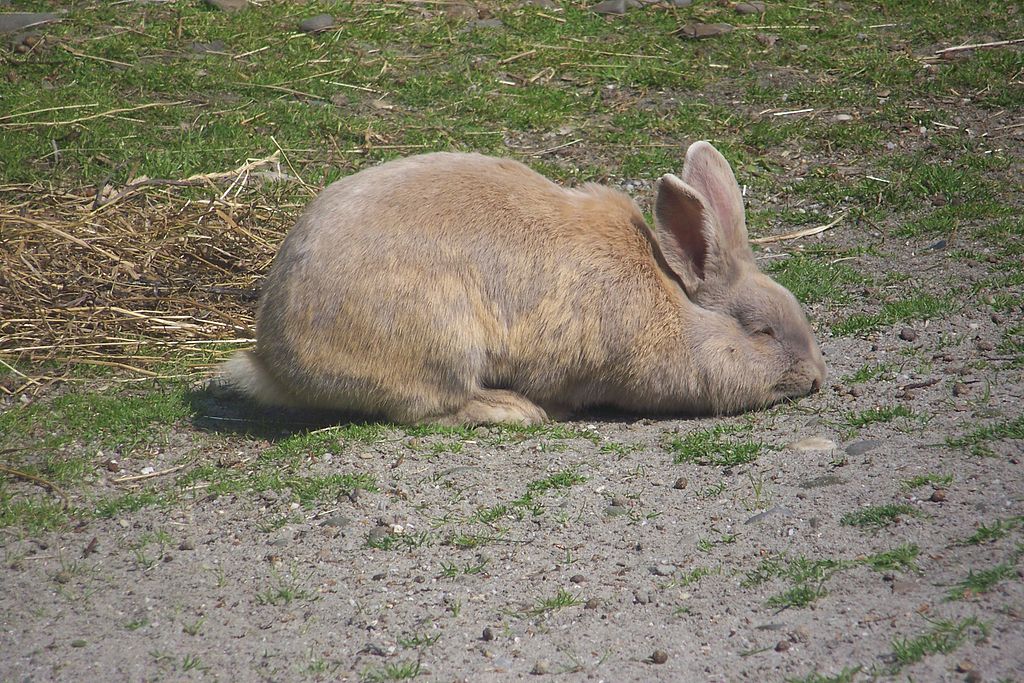These rabbits are not just adorable but following their nose can uncover very useful treasures.— Taoist Monk
A rare supernatural species of rabbits. They are originally from China but can be found in many corners of the world. They expanded their natural habitat with the help of humans bringing them with them. At the same time, their high value caused them to be hunted close to extinction many times.
The only reason the jade rabbit has survived is a small order dedicated to the preservation of this divine creature. They believe that the first jade rabbit was created by a deity of good fortune. They protect the jade rabbits and would never kill them. They mostly operate in China. But one chapter of the order has taken root in Southern Japan and one in New York.
The jade rabbit cannot be domesticated. Living in captivity leads to premature deaths and they rarely procreate.
Physiology & Anatomy
The jade rabbit is a small rabbit species. They have light brown, short fur with loopy, wide ears. The rabbit has a small jade stone within them that they absorb from their mother. During pregnancy the stone of the mother is split and is moved to its litter. This stone is the source of their supernatural perception, reflexes, strength and stamina. The increase is only small, but increases their chances of survival greatly.
Habitats
Jade rabbits live in temperate meadows, grasslands, bush lands and forests. They dig complex tunnel networks for protection from predators and shelter from weather. These tunnel networks can become many kilometers long. Within this network they dig drainage systems to prevent rain water to flood the tunnels. The rabbits dig birthing chambers and rearing chambers deep within the network to protect their young. Additional rooms are to store non-perishable foods and to for the rabbits to sleep in.
Sustenance
Jade rabbits are herbivores that eat small plants, seeds and fruits which they forage from the ground. They have a special nose to track down
spirit plants which gives them mystical energy that is absorbed by the jade stone. The stone itself is very small on birth and after giving birth. To restore the size of the jade rabbit can absorb the necessary materials and jade stone pieces when ingesting them. Jade rabbits always eat the jade stones of their ancestors when possible.
Social Behavior
They live in large colonies with several hundred rabbits that are organized across a massive territories. They establish complex social hierarchies and teach their young many useful skills for rabbits. Despite their small size and and physical weakness they are only hunted by supernatural predators. Ordinary predators are usually unable to hunt them due to their intelligence and ability to be stealthy. The rabbits have learned to avoid human hunters and their traps. Colonies are known to migrate to new territories when necessary. Often they were displaced by human settlements or powerful supernatural predators.
The jade rabbit is a diurnal species active during dusk and dawn. Although they have better night vision than their ordinary brethren they still prefer this time to stay save from predators.
Alchemy Materials
The jade rabbit was hunted close to extinction because of its supernatural nature. Several parts of the jade rabbit can be used as an ingredient for
alchemy. The effects are strongest when the rabbit has become a fully grown adult and differs greatly depending on how many spirit herbs an individual has consumed through its life.
Folklore
The jade rabbit is widely known in Chinese folklore, but has gained global traction due to campaigns of the order. They are believed to be the descendants of the Moon Rabbit who was able to create an elixir of immortality. Many believe that eating jade rabbit meat will extent their life span and many alchemists have attempted to create an elixir of immortality with the rabbits meat and parts.






I ADORE this article! Very cute (who doesn't love rabbits?!). A piece of unsolicited feedback? Maybe tease something of their supernatural abilities in the intro - it'll make your readers want to read on and find out more! :D
Thank you Janet! Constructive feedback is always welcome and you are absolutely right that I should do that :)